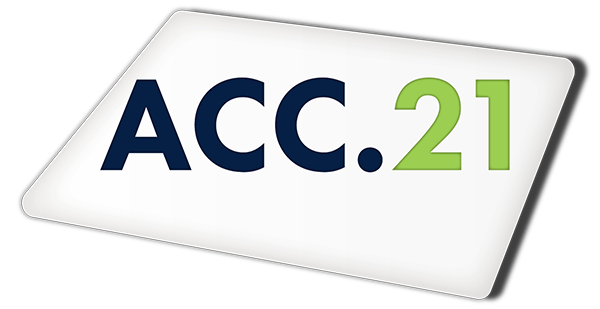QII | NCDR Research Sheds Light on Optimizing Post TAVR Care, Outcomes

ACC's NCDR suite of registries continue to be a robust source of data for researchers, and a critical component in continuing to help hospitals, practices and clinicians advance the quality of cardiovascular care and improve patient outcomes.
Read on about two recent studies using data from the STS/ACC TVT Registry that were published in Circulation: Cardiovascular Interventions. Share your thoughts about the findings on Twitter using #NCDR and #CardiologyMag or join in discussions on the ACC's LinkedIn page.
Antithrombotic Therapy in AFib Post TAVR
Significant variability in prescription of antithrombotic therapies among patients with atrial fibrillation (AFib) who undergo TAVR, including underuse of oral anticoagulants (OACs) in more than 40%, was found in a study by Matthew W. Sherwood, MD, MHS, FACC, et al.
They examined the association between antithrombotic therapies and one-year outcomes of stroke, bleeding and mortality in patients with preexisting AFib using STS/ACC TVT Registry data linked with Medicare claims to determine whether patients received OACs or antiplatelet therapies (APTs) or a combination (OAC+APT) at discharge.
The results showed significant variability in medication patterns. In a total of 11,382 patients, 5,833 (51.2%) received OAC+APT, 4,786 (42%) received APT only and 763 (6.7%) received OAC only. Of the patients discharged on OAC+APT, the most common regime was warfarin and aspirin (55.6%), followed by warfarin and dual APT (15.1%) and warfarin and a P2Y12 inhibitor (13.1%).
Among patients who received APT alone, 70.6% were prescribed dual APT with aspirin and a P2Y12 inhibitor, 23.6% aspirin alone, and 5.8% a P2Y12 inhibitor alone. For those discharged on OAC only, the majority (78.2%) received warfarin, 17.3% received a factor Xa inhibitor and 4.5% received dabigatran.
Compared with patients receiving OAC only or OAC+APT, those who received APT only were less likely to be female, have prior stroke or have TAVR via femoral access and were more likely to have coronary artery disease, prior aortic valve procedure, dialysis-dependent renal failure and higher STS PROM scores. The three groups had a similar estimated risk for stroke and bleeding, calculated as median CHA2DS2-VASc score, as well as similar Anticoagulation and Risk Factors in Atrial Fibrillation (ATRIA) scores.
In adjusted analyses, the risk of all-cause mortality and stroke was not significantly different. Bleeding risk was higher with OAC+APT, vs. APT only (hazard ratio [HR], 1.16; 95% confidence interval [CI], 1.05-1.27) and similar with OAC only (HR, 1.17; 95% CI, 0.93-1.47).
Sherwood and colleagues note that use of OAC+APT vs. OAC or APT alone was associated with a reduced risk of stroke and all-cause mortality but an increased bleeding risk at one year, vs. APT alone. The limited use of OAC is an "important finding," they state, given the study population had an "absolute indication for OAC."
They suggest the study findings warrant subsequent randomized clinical trials, as well as further research to determine the optimal antithrombotic therapy in this rapidly growing, highly vulnerable patient population. Additional research is needed to determine the optimal antithrombotic therapy in TAVR patients with preexisting AFib.
In an accompanying editorial, Mirvat Alasnag, MD, FACC, and Gerald V. Naccarelli, MD, FACC, write it "is striking" that 42% of patients did not receive any OAC at discharge despite being "at a high risk of embolic stroke." They add that an "important lesson" from the evolution of TAVR "is that leaps in the technology should have parallel progress in antithrombotic management."
TAVR and Risk of AKI
Acute kidney injury (AKI) is not uncommon after TAVR, with a recent study showing that while the incidence has decreased, it continues to occur in more than 10% of patients.
In an analysis of STS/ACC TVT Registry data, Howard M. Julien, MD, MPH, ML, FACC, et al., found that the incidence of post-TAVR AKI decreased over time, with an overall incidence of 27.3% in the first six months of 2012, vs. 9.3% in the first six months of 2018.
The researchers also examined data from a cohort of 107,814 patients who underwent TAVR between 2016 and 2018 to assess factors associated with AKI and the relationship between AKI and one-year mortality. Patients had a mean age of 80.5 years and were more likely to be male (53.8%) and White (93.7%) with comorbidities, including hypertension (90.7%), diabetes (37.5%) and prior myocardial infarction (21.9%). In total, 11,566 patients (10.7%) experienced AKI, including 10,220 (9.5%) with Stage 1 AKI, 134 (0.1%) with Stage 2 AKI and 1,212 (1.1%) with Stage 3 AKI.
Factors most strongly associated with Stage 3 AKI included conversion to open surgery (adjusted odds ratio [aOR], 10.8; 95% CI, 6.4-18.3; p<0.001) and emergency or salvage procedure vs. elective procedure status (aOR, 5.6; 95% CI, 3.4-9.2; p<0.001). Black patients were more likely than White patients to develop Stage 3 AKI (aOR, 1.36; 95% CI, 1.05-1.77; p=0.019). At one year, the risk of all-cause mortality was higher among all patients who developed AKI vs. those who did not (Stage 3 AKI aOR, 7.0; 95% CI, 6.0-8.2; p<0.001).
The authors note that one-year mortality is higher among patients with AKI, particularly those with Stage 3 AKI, "highlighting the dangerous consequences associated with this complication." Going forward, "opportunities to improve clinical decision-making could be aided through the formal future development and validation of a risk prediction model of incident AKI after TAVR," they write.
The study "should raise concern and call for special attention geared towards reducing the development of AKI following TAVR," Ran Kornowski, MD, FACC, et al., write in an accompanying editorial. They suggest a multipronged approach to minimize post-TAVR AKI involving steps before, during and after the procedure.
Clinical Topics: Anticoagulation Management, Arrhythmias and Clinical EP, Cardiac Surgery, Cardiovascular Care Team, Invasive Cardiovascular Angiography and Intervention, Prevention, Atherosclerotic Disease (CAD/PAD), Anticoagulation Management and Atrial Fibrillation, Atrial Fibrillation/Supraventricular Arrhythmias, Aortic Surgery, Cardiac Surgery and Arrhythmias, Interventions and Coronary Artery Disease, Hypertension
Keywords: ACC Publications, Cardiology Magazine, Quality Improvement, National Cardiovascular Data Registries, Registries, Fibrinolytic Agents, Warfarin, Atrial Fibrillation, Antithrombins, Factor Xa Inhibitors, Patient Discharge, Anticoagulants, Aortic Valve, Coronary Artery Disease, Odds Ratio, Transcatheter Aortic Valve Replacement, Confidence Intervals, African Americans, Aspirin, Conversion to Open Surgery, Vulnerable Populations, Renal Dialysis, Medicare, Stroke, Acute Kidney Injury, Risk Factors, Diabetes Mellitus, Hypertension, Prescriptions, Hospitals, Technology
< Back to Listings


